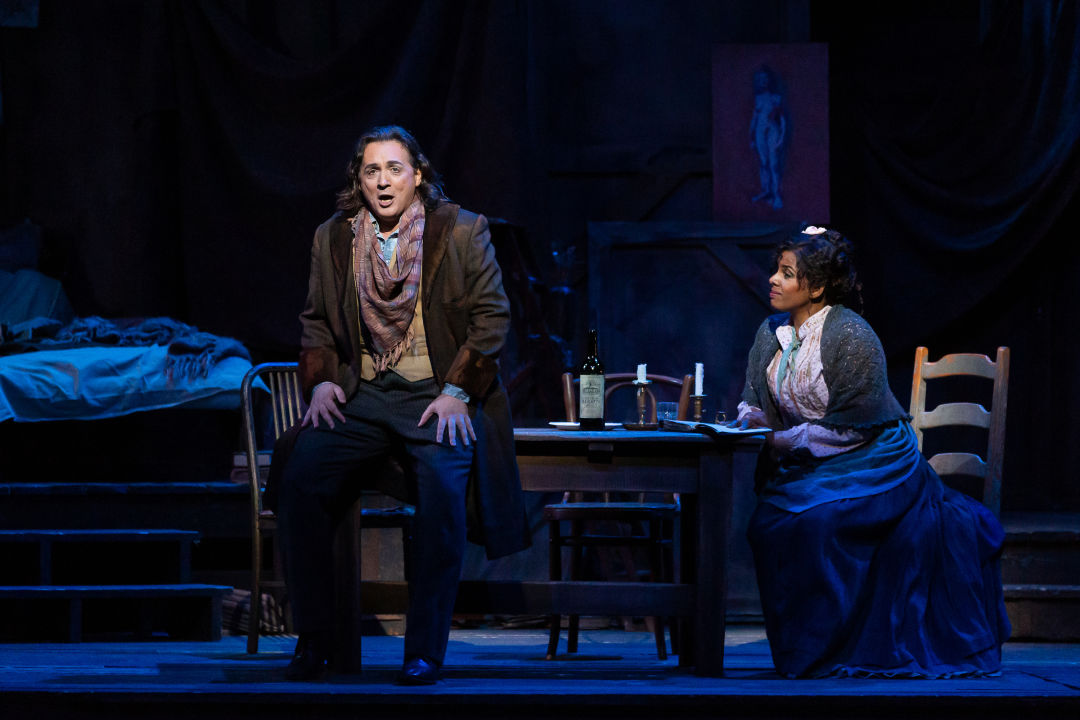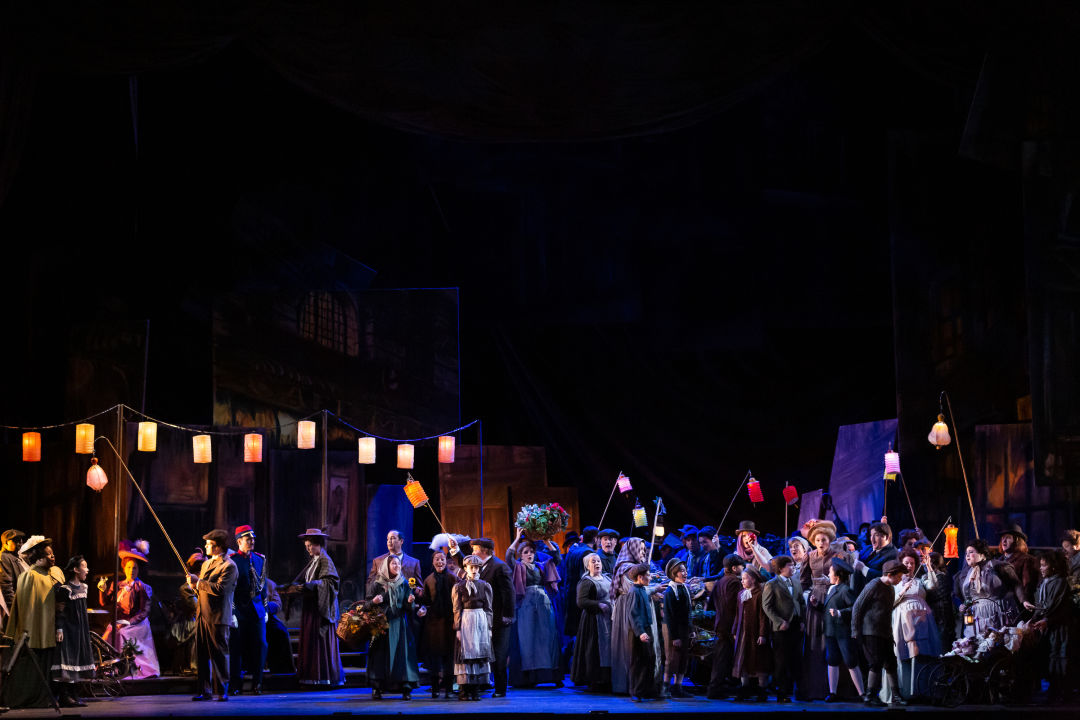Review: A Mild La bohème Leans on the Quality of Its Source Material

Ivan Magrì as Rodolfo and Nicole Heaston as Mimì.
Image: Lynn Lane
With some of the best music opera has to offer, it’s hard to flop Puccini’s La bohème. But that doesn’t mean it’s easy to knock it out of the park either.
There’s no overture to this opera, and it opens quickly onto some meaty arias, so Houston Grand Opera’s production (co-produced with Canadian Opera Company and the San Francisco Opera) must deliver from the moment the scrim rolls up. What first meets the eye is a hodgepodge arrangement of frames and paintings below drab tannish-gold draperies. A wood-burning stove sits just off center, its stove pipe sticking up like a castaway from the stage.
When I first saw this production, directed by John Caird, at the Wortham in 2012, I thought it was a Bohemian nod to the poor artists laboring to make rich art (Rodolfo, the leading man, offers almost immediately to throw the five-act tragedy he’s been writing into the fire for warmth). But as the acts shift into a marketplace and back to Rodolfo’s apartment, everyone clad in unremarkable costumes designed by David Farley, it’s all too clear that visually, this is less of a feast and more of a mild broth.

Image: Lynn Lane
The production didn’t dazzle vocally, either. As the beloved aria “Mi chiamano Mimì” puts plainly, the acclaimed role of Mimì requires a delicacy that communicates her astonishing but frail beauty—it’s a tragic love story in Paris, after all—and soprano Nicole Heaston is not quite the right pick. I’ve long admired her talent, most recently when she sang in Gustav Mahler’s “Resurrection” Symphony at the Houston Symphony earlier this season, but the vocal opulence that made her shine in that performance is what prevents her from achieving Mimì’s pure sweetness here. Soprano Pureum Jo also tends toward a heavier singing style, but in the assertive role of Musetta (and thanks to some light physical comedy in the second act), she fared better.
As her lover Rodolfo, Italian tenor Ivan Magrì came out swinging, but it was too much too soon. While his voice warmed to a nice hue by the fourth act, Magrì sounded like he was straining beyond his means for most of the opera. This might have been a consequence of the orchestra, which James Lowe conducted with finesse but at a volume that often swallowed the vocalists. But Rodolfo’s Bohemian friends held the fort. As the painter Marcello, Michael Sumuel performed with robust authority, and bass-baritone Federico De Michelis and baritone Geoffrey Hahn (as the philosopher Colline and the musician Schaunard) delivered their solos with refreshing energy and heart.
Yet in this famously poignant opera about grown-ups struggling to live, children appear as the unexpected bright spot. The children’s chorus, directed by Karen Reeves, horsed around joyously and sang with sweet precision. Rodolfo sings “How do I live? I live!” in the first act, but it wasn’t until children took the stage that I believed this production meant it.
Thru Nov. 11. Tickets from $35. Wortham Center, 501 Texas Ave. 713-228-6737. More info and tickets at houstongrandopera.org.




